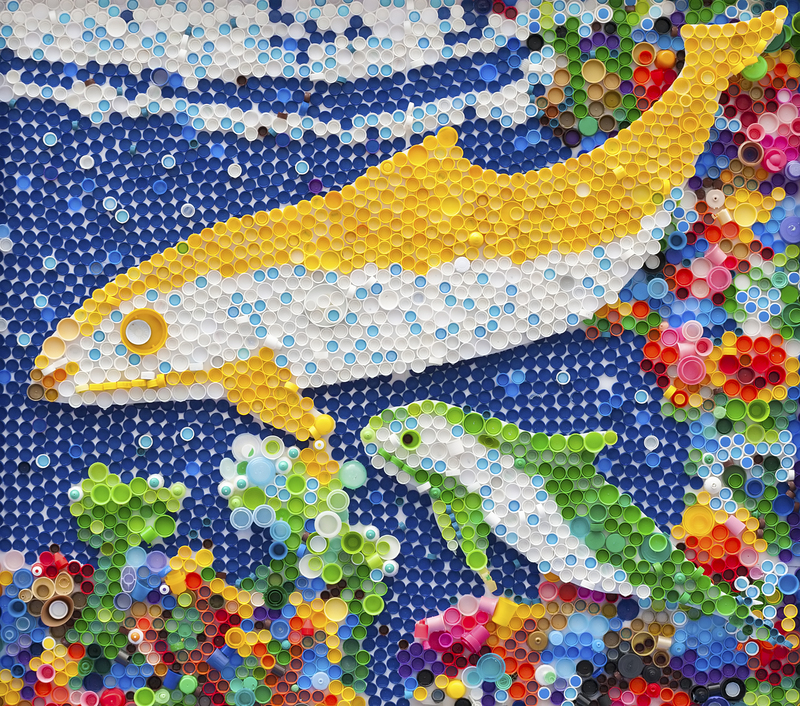How to Ensure Your PPE Waste Doesn't Harm the Environment
In recent years, the consumption of Personal Protective Equipment (PPE) such as masks, gloves, face shields, and gowns has soared, especially during the COVID-19 pandemic. While these items are crucial for public health and safety, the disposal of PPE waste poses a significant environmental challenge. If not handled responsibly, PPE waste can contribute to land and marine pollution, endanger wildlife, and introduce toxic substances into the ecosystem.
This comprehensive guide will walk you through practical strategies on how to dispose of PPE waste responsibly, reduce ecological harm, and promote a sustainable approach to PPE usage.
Why Responsible PPE Waste Management Is Essential
PPE waste is primarily composed of plastics like polypropylene, latex, and other synthetic materials that can take centuries to decompose in landfills. When mishandled, they can leak harmful chemicals into soil and water or break down into microplastics that infiltrate food chains.
Here are some key reasons to ensure your PPE waste management is environmentally friendly:
- Prevention of pollution: Proper disposal prevents land, water, and air pollution resulting from randomly discarded PPE.
- Wildlife protection: Animals can mistake PPE for food or become entangled, leading to injury or death.
- Human health: Decomposition of PPE can release toxic compounds that may affect human health and well-being.

Understanding Different Types of PPE Waste
Not all PPE waste is the same. Understanding the types you are dealing with will allow for more effective disposal and recycling:
- Single-use PPE: Includes disposable masks, gloves, gowns, and shoe covers. They are made to be used once and then discarded.
- Reusable PPE: Items such as cloth masks and washable gowns, which can be sanitized and reused multiple times.
- PPE with hazardous contamination: Used in medical, laboratory, or high-risk settings and potentially contaminated with infectious materials.
Best Practices for Reducing PPE Waste
Choose Reusable Options When Possible
Opt for reusable PPE (such as cloth masks and washable face shields) for non-medical situations. Reusable PPE can dramatically cut down the volume of waste heading to landfills. Remember to follow proper cleaning and sterilization protocols to maintain their effectiveness.
Educate Yourself and Others
Raising awareness is a powerful step. Inform family, friends, and your wider community about the proper use and responsible disposal of PPE. Educational materials can help correct misconceptions and prevent littering of essential safety equipment.
Minimize Unnecessary PPE Use
Use PPE judiciously. Only wear them when needed, and avoid stockpiling or using multiple items at once unless necessary for safety. Rational usage conserves resources and limits waste generation.
Proper Disposal Methods for PPE Waste
Separate PPE Waste from Regular Trash
To prevent contamination and facilitate proper treatment, PPE waste should be disposed of separately from ordinary household garbage. Use dedicated, clearly labeled bins for PPE, especially in public areas or workplaces.
How to Safely Dispose of Non-Hazardous PPE Waste
-
Remove Used PPE Carefully:
- Do not touch the outside of your mask or gloves after use. Use the straps or inside surfaces.
-
Place in Dedicated Bag:
- Place the item in a plastic bag. Seal the bag tightly to prevent leakage or exposure.
-
Wait Before Disposal:
- Some guidelines recommend waiting 72 hours before placing the sealed bag in household trash, especially if the PPE was used by a sick individual, to reduce risk.
-
Hand Hygiene:
- After handling PPE waste, wash your hands thoroughly and sanitize any touched surfaces.
Managing and Disposing of Hazardous PPE Waste
If your/workplace uses PPE contaminated with hazardous or infectious substances, it must be disposed of as biohazardous waste. This usually involves:
- Disposing items in yellow or red biohazard bags.
- Sending waste to licensed medical waste disposal companies.
- Following local, state, and federal regulations for hazardous waste handling.
Never throw potentially infectious PPE in regular household or public trash bins.
PPE Recycling Programs
Unfortunately, many municipal recycling programs do not accept disposable PPE due to contamination risks and technical recycling limitations. However, specialized programs and organizations do exist. Look for:
- TerraCycle: Offers Zero Waste Boxes for PPE, which you can fill and ship for safe recycling.
- Pharmacy and hospital drop-offs: Some healthcare facilities accept PPE waste from the public for safe disposal.
- Local initiatives: Community organizations or businesses may run periodic PPE collection and recycling drives.
*Remember: If your PPE is not contaminated with hazardous material, clean disposable masks and face shields made of plastic may have recycling options through specialized channels.
Innovative Alternatives to Traditional PPE Waste
An important aspect of minimizing PPE waste is to seek out and support innovations in sustainable PPE design and material use. Some examples include:
- Biodegradable PPE: Made from plant-based materials that can break down more quickly in the environment.
- Recyclable PPE: Masks, gloves, and gowns designed for easy processing in recycling facilities.
- PPE Take-Back Programs: Companies collecting their products post-use to ensure responsible recycling or disposal.
Supporting such products encourages manufacturers to prioritize environmental sustainability in future PPE designs.
The Impact of PPE Waste on the Environment
Plastic Pollution
Most PPE products are single-use plastics. Disposed carelessly, they break down into microplastics, contaminating oceans, rivers, and soil. Microplastics are ingested by marine life, entering the food chain and causing long-term ecological damage.
Wildlife Hazards
Improperly discarded PPE can entangle birds, fish, and mammals or obstruct their digestive systems when mistaken for food. There have been numerous reports of animals harmed by elastic mask straps and gloves. Cutting up straps before disposal and ensuring bags are tightly sealed can minimize these hazards.
Hazardous Chemical Leaching
Synthetic materials in PPE may contain additives like plasticizers and antimicrobial agents. When left in landfills, these compounds can leach into groundwater and soil, posing risks to human and ecosystem health.
How to Promote Sustainable PPE Use in Your Community
Engage in Community Clean-up Efforts
Participate in, or organize, neighborhood clean-ups focused on collecting PPE litter. Public events raise awareness of the scale of the problem and foster a sense of collective responsibility.
Advocate for Local Recycling and Collection Programs
Urge local government, schools, and businesses to implement dedicated PPE waste bins and arrange for specialized collection services. Collaborate with environmental groups to petition for better infrastructure and educational campaigns on the issue.
Support and Purchase from Eco-friendly PPE Manufacturers
Whenever possible, choose suppliers that use sustainable materials and packaging for their PPE products. Your purchasing power encourages positive change throughout the industry.
Spread Awareness on Social Media and in Your Network
Use social platforms to highlight responsible disposal practices, the environmental impact of improper PPE waste handling, and promote green alternatives.
The Role of Employers & Institutions in Managing PPE Waste
- Provide Clear Guidance: Organizations should communicate exactly how staff and visitors should dispose of PPE waste on site.
- Set Up Waste Collection Points: Place labeled bins in accessible locations for safe collection and timely disposal.
- Partner with Licensed Waste Handlers: Use certified companies for the removal and treatment of potentially hazardous PPE waste.
Frequently Asked Questions on PPE Waste and Environmental Harm
Can used PPE be recycled in my curbside recycling bin?
No. Most municipal recycling programs do not accept single-use gloves and masks due to contamination risks. Use specialized recycling programs where available.
Is burning PPE waste safe for the environment?
Open burning of PPE releases toxic gases and should never be done. Only licensed incineration facilities can treat hazardous PPE waste in a controlled, compliant manner.
How long does PPE waste take to decompose?
Plastic-based PPE (masks, gloves) can take hundreds of years to fully break down, highlighting the need for responsible use and disposal.
Are there any eco-friendly alternatives to standard PPE?
Yes. Options include biodegradable and recyclable PPE made from sustainable materials. Check for these alternatives when purchasing.

Conclusion: Making PPE Waste Sustainable Is in Our Hands
The world has witnessed the essential role of PPE in safeguarding human health, but its widespread use brings new responsibility. Each of us can play a part to keep PPE waste from harming the environment by choosing reusable options, disposing of used PPE responsibly, and supporting innovation in sustainable PPE design.
By applying the strategies outlined above, raising awareness, and advocating for better waste treatment solutions, we can protect both public health and the planet we all share.
Together, let's ensure our protection doesn't come at the earth's expense.